Foiling masterclass
Fast, fun but not for me? Think again…
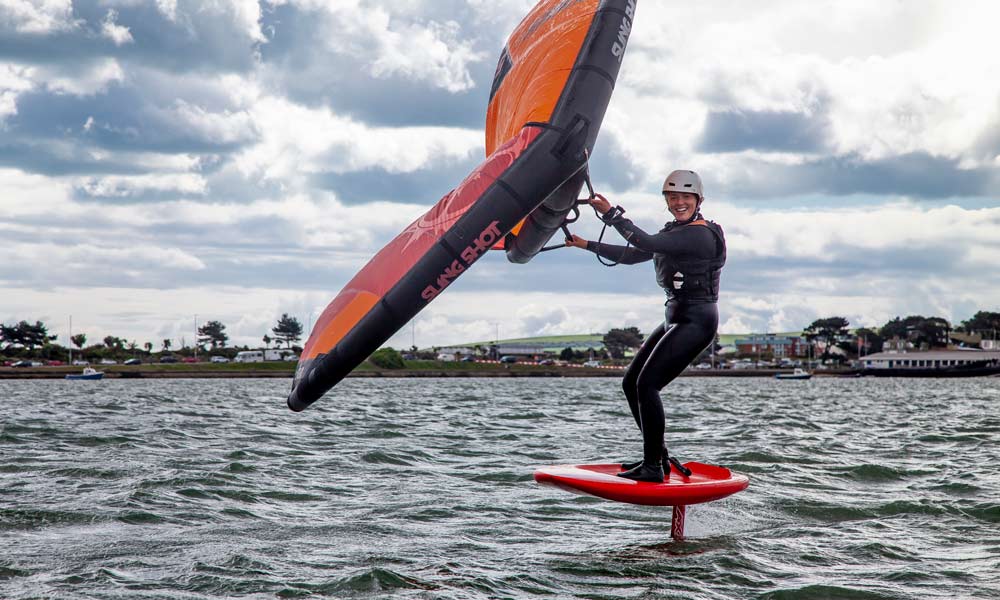
Where foiling was once an exclusive playground for professional sailors and racers, the tides have certainly changed. Foiling equipment, locations, and even instructors are now in place to help a wider range of sailors take flight on the water.
There’s no doubt foiling has taken the industry by storm. But for many, it can seem out of reach or daunting. In reality, foiling has never been more accessible. Advancements and adaptations in equipment have now offered anyone the opportunity to take flight.
How does foiling work?
Foiling is when a boat or board lifts above the water on specially fitted hydrofoils. Simply put, the foils bring the hull or board out of the water reducing drag and increasing efficiency and speed, especially in lighter conditions.
What conditions do you need?
Depending on your chosen equipment, conditions, and technique, some foils lift boards or boats in wind as light as 6-7 knots. However, it’s best to try your first attempts in 10 knots or over, enabling you to get a feel of how much lift the foil gives and how best to encourage flight.
Early on, tuition plays a crucial part in gaining and embedding the right skills, techniques, and safety considerations. A combination of the correct coaching points, learning environment, and equipment set up will increase the likelihood of success and development.
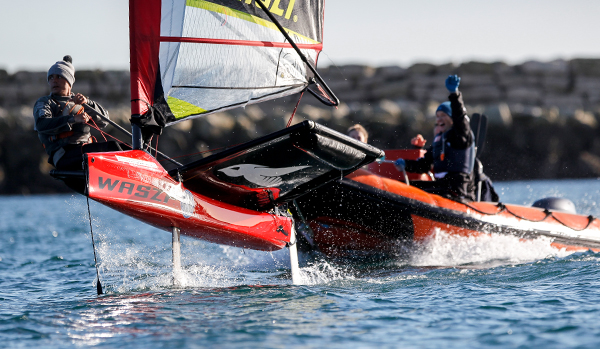
Is foiling for me?
If you can blast in the footstraps windsurfing, have good wing control and can maintain ground upwind wingsurfing, or comfortably sail a single-handed dinghy you can learn to foil. Intermediate windsurfers, or Level 2 sailors who can adjust their stance to the conditions and make effective use of their equipment are ready to foil.
Often compared to the exhilaration felt by planing windsurfers, foiling focuses on recreational sailing over racing. Best of all it’s also more achievable than you might think, with most people surprised at how quickly they can get up on the foils. Although it obviously takes a few more sessions to be relaxed and confident in flight.
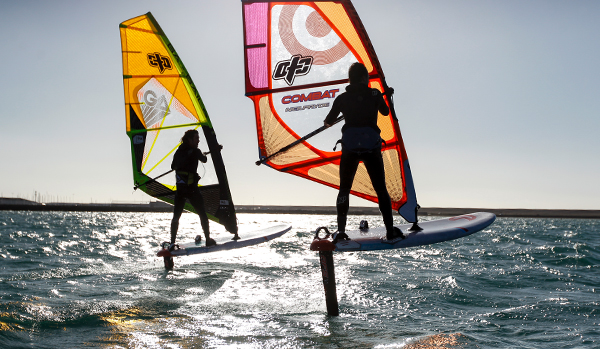
That flying feeling
Feedback from those taking their first flights has the same recurring theme, with most likening it to their first planing experience on a boat or board. With the overriding response being exhilaration.
The other, surprising sensation is silence as you glide freely above the water. Without the feedback from the water surface, everything is much more tranquil.
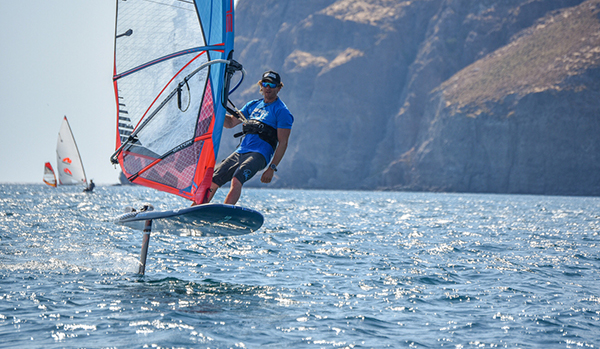
Tips for take off
Three of our top trainers share their foiling tips:
RYA SailFoil Trainer, Shaun Priestley:
- Always aim to take off on a reach to a close reach. Once the boat lifts out of the water and starts foiling, shift your concentration to the lift from the foils and maintain balance to assist you in sustained flight.
- Balance and mainsheet trim, as well as sailing to the apparent wind, are key to foiling success. The skill of sailing with windward heel and effective use of the foils are all techniques that come naturally after practice.
- Keep the boat flat!
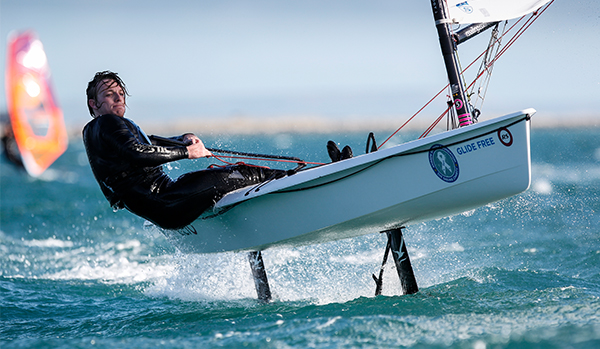
RYA WindFoil Trainer, Sam Ross:
- When you first launch, uphaul! This will help to avoid any unwanted contact with the foil. Always keep hold of the boom! This will ensure you stay well clear of the foil if you end up in the water.
- The further back your weight is on the board, the more lift you’ll get. In marginal conditions get in the back strap early to help pump the foil, in windier conditions keep the back foot in front of the back strap to reduce lift and increase control.
- When windsurf foiling you have two engines, you can pump the rig to generate speed, but also pump down into the board and foil to generate lift.
- Once foiling, keep the rig still and lock the back leg down to maintain a flat board in flight.
RYA WingFoil Trainer, Dan Hallam:
- Adopt a wide stance. Having your feet just over shoulder width apart will allow you to move your weight easier and this will help control your take off.
- Try to keep the board flat as the board speed increases. This allows the foil to do the work of creating lift and it will mean the board rises slower and with more control.
- Keep your head up. Looking where you are going will help keep a good stance with hips forward and shoulders back. It will also aid your direction of flight.
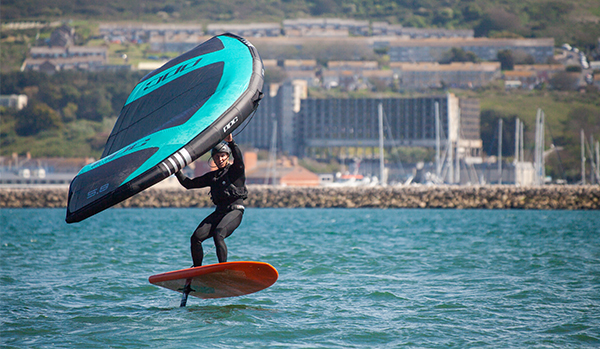
Find a course
Foiling was introduced to the RYA’s National Sailing and Windsurfing training schemes in 2019. More recently we have also introduced wingfoiling courses as part of the new Wing training scheme – adding another exciting element for watersports enthusiasts to enjoy.
The courses are all about getting on the water, with an instructor that’s trained to give you just the right amount of background theory for each stage of your progression.
Find out more about RYA foiling courses and locate a training centre near you.
Recommended reading
The RYA Foiling book is the official supporting text for the RYA foiling courses and outlines the key skills required for both windfoiling and sailfoiling.
Did you know...
As an RYA member you can take advantage of free third-party liability insurance for windsurfing and wingsurfing. Simply update your boating interests to activate your cover. T&Cs apply.
Not a member? Join today to enjoy this and other great benefits.
